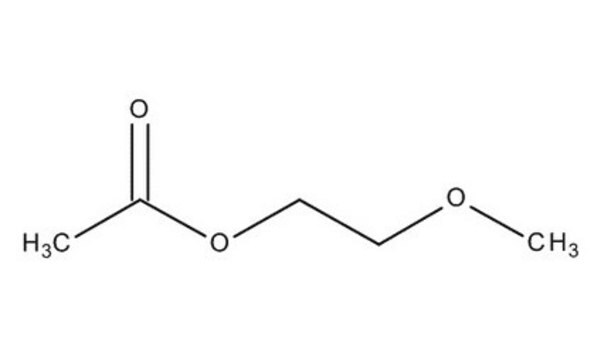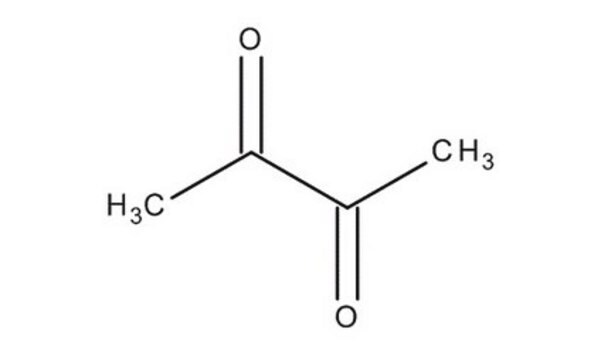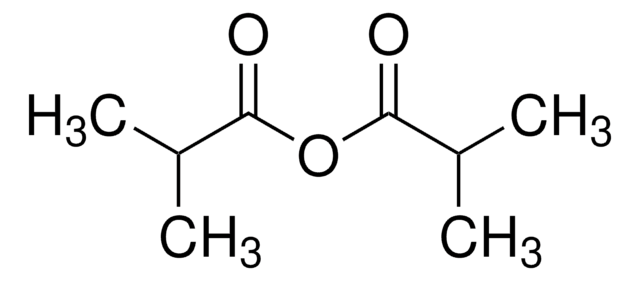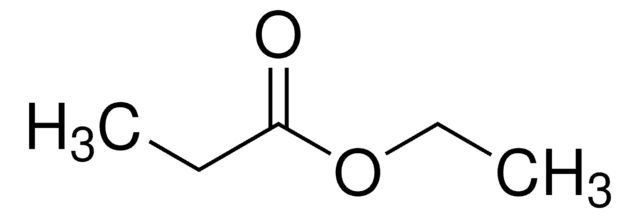308269
2-Methoxyethyl acetate
suitable for HPLC, ≥99%
Synonyme(s) :
1-Acetoxy-2-methoxyethane, Ethylene glycol monomethyl ether acetate, Methyl Cellosolve® acetate
About This Item
Produits recommandés
Niveau de qualité
Essai
≥99%
Forme
liquid
Produit purifié par
glass distillation
Limite d'explosivité
0.34-6.3 %
Technique(s)
HPLC: suitable
Impuretés
<0.050% water
Résidus d'évap.
<0.0005%
Indice de réfraction
n20/D 1.402 (lit.)
pb
145 °C (lit.)
Pf
−65 °C (lit.)
Densité
1.009 g/mL at 25 °C (lit.)
λ
H2O reference
Absorption UV
λ: 254 nm Amax: 1.00
λ: 275 nm Amax: 0.15
λ: 300 nm Amax: 0.05
λ: 350-400 nm Amax: 0.01
Application(s)
food and beverages
Chaîne SMILES
COCCOC(C)=O
InChI
1S/C5H10O3/c1-5(6)8-4-3-7-2/h3-4H2,1-2H3
Clé InChI
XLLIQLLCWZCATF-UHFFFAOYSA-N
Vous recherchez des produits similaires ? Visite Guide de comparaison des produits
Catégories apparentées
Mention d'avertissement
Danger
Mentions de danger
Classification des risques
Acute Tox. 4 Dermal - Acute Tox. 4 Inhalation - Acute Tox. 4 Oral - Flam. Liq. 3 - Repr. 1B
Code de la classe de stockage
3 - Flammable liquids
Classe de danger pour l'eau (WGK)
WGK 1
Point d'éclair (°F)
114.8 °F - closed cup
Point d'éclair (°C)
46 °C - closed cup
Faites votre choix parmi les versions les plus récentes :
Déjà en possession de ce produit ?
Retrouvez la documentation relative aux produits que vous avez récemment achetés dans la Bibliothèque de documents.
Notre équipe de scientifiques dispose d'une expérience dans tous les secteurs de la recherche, notamment en sciences de la vie, science des matériaux, synthèse chimique, chromatographie, analyse et dans de nombreux autres domaines..
Contacter notre Service technique










